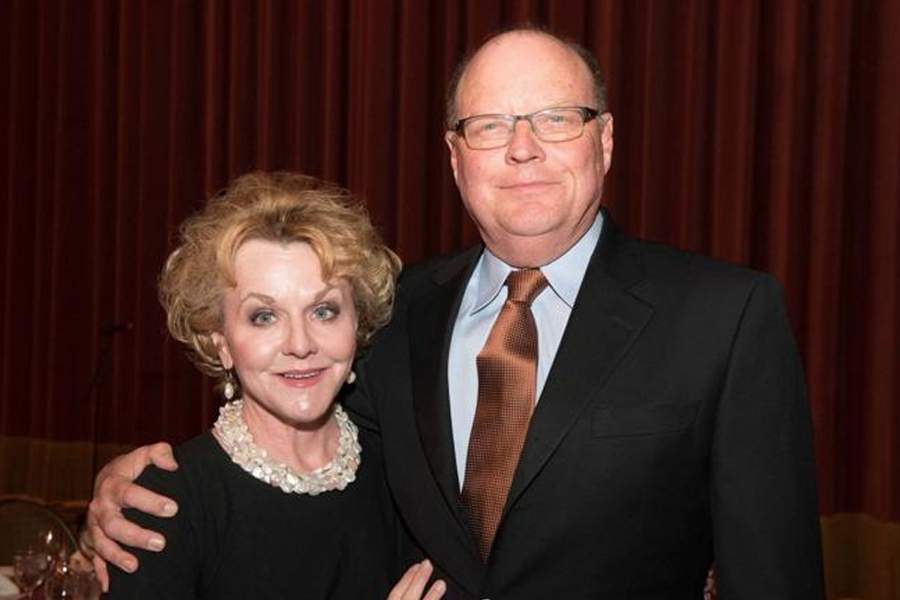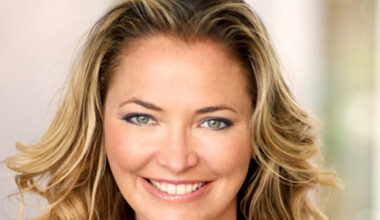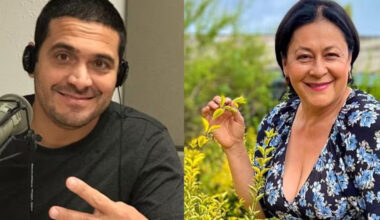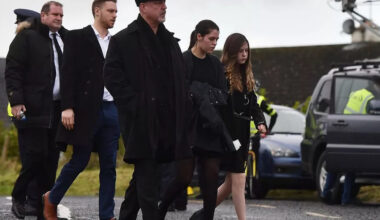Basic Information
| Field | Detail |
|---|---|
| Full name (as recorded) | Roland Theodor Achilles von Kurnatowski Sr. |
| Birth year | 1912 (circa) |
| Birthplace | Bluefields region, Nicaragua |
| Death | August 18, 1996 |
| Place of burial | Metairie Cemetery, New Orleans area |
| Partner / Mother of children | Gina Capitani |
| Notable children | Theodor (Theo) Capitani von Kurnatowski III (comedian, born 1980), Rolanda (sister), Whittier (sister), Roland von Kurnatowski Jr. (half-brother, d. 2019) |
| Ethnic / family background (reported) | Polish lineage with Central American roots (family history spans Nicaragua, Europe, and the U.S.) |
| Occupation (reported in multiple profiles) | Historically described in family writeups as a mahogany farmer; public records do not provide a long professional CV |
A small, cinematic life — my take
If I had to paint Roland Von Kurnatowski Sr. with one line, it would be: an old-world name that carried itself across oceans and into the humid, music-rich streets of New Orleans. I followed the thread—names, dates, towns—like a film editor cutting between three reels: a birth in Nicaragua (around 1912), a life that threaded through families and hemispheres, and a final fade-out in August 1996, with a marker in Metairie Cemetery that anchors the story in place and time.
Roland’s name reads like something from a period drama—Theodor Achilles—yet the family life around him is more contemporary, messy, human. He is, for our purposes, the patriarchal axis in a constellation that includes Gina Capitani (the mother figure), a famous son who narrates his own life into comedy (Theo), and a handful of siblings and half-siblings whose lives ripple into local business headlines and family lore.
Numbers orient us: born ~1912, deceased 1996, one son (born 1980) who turned the family name into a public brand; one half-brother whose death in 2019 made local news; and the quiet arithmetic of decades—lives overlapping, sometimes out of sync. I keep thinking of those long, slow tracking shots in cinema—the camera moving down a hallway, pausing at portraits, moving on. Family portraits are like that; you study one face, then another, trying to understand what connects the smiles.
Family table — introductions, in my own voice
| Name | Relationship to Roland Sr. | Quick introduction |
|---|---|---|
| Gina Capitani | Partner / mother of several children | The maternal center of the family story — she raised the younger generation and appears as the anchor in the family’s domestic scenes. |
| Theodor (Theo) Capitani von Kurnatowski III | Son (public figure: comedian/podcaster) | The most publicly visible member of the family, born 1980, who turned private history into material and who often references family in his storytelling. |
| Roland von Kurnatowski Jr. | Older half-brother | A presence in local business circles; his death in 2019 was covered in the press, and his life is frequently referenced in family timelines. |
| Rolanda (often Ro) | Daughter / sister | Known in family and social circles — appears in public profiles and is part of the younger generation that grew up around Theo. |
| Whittier | Daughter / sister | Another of the younger siblings; present in family summaries though intentionally private in public-facing accounts. |
| Extended half-siblings | Various | Scattered references to older half-siblings and relatives; their names and professions show up inconsistently across family write-ups. |
I treat these rows less like a genealogical cold list and more like characters in a novel—each with a doorway scene: Gina in the kitchen, Theo on stage, Roland Jr. at a local venue’s back office, Rolanda moving through the halls of everyday life. The dates—1912, 1980, 1996, 2019—are the beats that punctuate the screenplay.
Career, identity, and the rumor mill
Roland Sr. carries an occupation in the family stories—“mahogany farmer”—a visual that places him in the heat of tropical woods, counting trunks and timber like a plantation-era ledger. That detail crops up regularly in biographical sketches; it reads like a piece of mise-en-scène: sun, saw, and the slow commerce of wood. But there’s no long, public ledger of corporate titles or decades-long résumés attached to his name—his life is mostly visible through the people who followed him and the family anecdotes that stuck.
His name’s Polish cadence—von Kurnatowski—alongside a Central American birthplace paints a global portrait: Old-World aristocratic-sounding lineage meets the messy, migratory modern family. It’s a classic Hollywood mash-up: think of a character who could be in a Roman Polanski period film one scene, then in a gritty indie dramedy the next.
Net worth? There’s a silence there—no clear public ledger, no flashy figure to paste on a tabloid banner. Instead, the family’s public presence is measured more by cultural footprint (a son who tours comedy clubs and hosts podcasts) and by local legacy (a half-brother involved in New Orleans music business circles).
Key dates & a brief timeline
| Year | Event |
|---|---|
| ~1912 | Birth of Roland Theodor Achilles von Kurnatowski Sr., Bluefields area (reported). |
| 1980 | Birth of Theodor (Theo), who later becomes a comedian and podcaster. |
| 1996 | Death of Roland Sr. — August 18; burial in Metairie Cemetery. |
| 2019 | Death of Roland von Kurnatowski Jr. (half-brother) reported in local press. |
These are the punctuation marks. Between them lies decades of ordinary life, family disputes, reunions, children growing into careers, and a son who converts private memory into public performance—an alchemy that makes names sticky.
The chorus of rumor, news, and social chatter
Family stories travel differently now. A half-brother’s death becomes a local headline; a comedian’s joke becomes a clip that fans splice into reaction reels; siblings show snapshots on social platforms. Where archival records leave gaps, social media and press coverage rush in—sometimes clarifying, sometimes muddying the lines. I like to think of it as the remix era of family history: original recordings (birth, death, burial) get sampled, looped, and repurposed into lore.
If you listen closely, the story’s subtext is the same everywhere: migration, reinvention, and a name handed down—Roland—like a film prop passed from hand to hand in scene after scene.
FAQ
Who was Roland Von Kurnatowski Sr.?
Roland Sr. was the patriarchal figure at the center of a family whose story spans Nicaragua, New Orleans, and public life; he was born circa 1912 and died August 18, 1996.
Was Roland Sr. Theo Von’s father?
Yes — he is recorded as the father of comedian Theo Von (Theodor Capitani von Kurnatowski III).
When did Roland Sr. die and where is he buried?
He died on August 18, 1996, and is buried in the Metairie Cemetery area near New Orleans.
What was Roland Sr.’s occupation?
Family writeups commonly describe him as a mahogany farmer, though there is no extended public employment dossier attached to his name.
Who are the notable family members?
Notable family figures include partner Gina Capitani, son Theo (born 1980), sister Rolanda, sister Whittier, and half-brother Roland Jr. (d. 2019).
Is there public information about his net worth?
No reliable, public estimate of Roland Sr.’s net worth is available.
Did any family members make news?
Yes — Roland von Kurnatowski Jr. (a half-brother) attracted local press attention, including coverage after his death in 2019.
What is the family’s ethnic background?
The family is presented as having Polish roots with Central American connections, creating a hybrid cultural identity across generations.



